The pharma industry has made great progress towards adopting digital media, and this advancement has accelerated during the Covid-19 pandemic. At the ISMPP Virtual 17th Annual Meeting I had the opportunity to attend one such session that highlighted the real-world impact made due to adoption of digital enhancement by pharma and publishers.
Moderated by Elvira D’souza, President, Cactus Life Sciences, Cactus Communications, the session had a prestigious line up of speakers, namely, Peter de Jong, Global Health Director, Wiley; Rekha Rao, Executive Director, Global Publications, Amgen; and Hetal Patel, Global Medical Communications, Team Lead, Inflammation, Boehringer Ingelheim.
Below is a summary of all that was discussed.
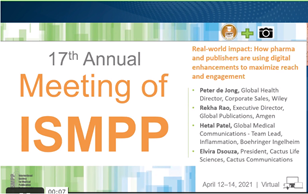
Session Objectives:
- Learn how pharma and publishers have embraced digital.
- Understand why and how to include digital enhancements in publication strategy.
- Understand common challenges during execution.
- Take away best practices to implement digital enhancements and measure effectiveness.
Opening Remarks on Trends
Peter de Jong (Wiley) provided an overview of the results of a recent survey regarding healthcare professional (HCP) engagement (involving 827 HCPs) that was conducted to acquire more information about their digital behavior and evolving content needs and preferences. The survey primarily revealed that content preferences are rapidly evolving. Highlights discussed by the panel are captured in the slides below, and the full survey report is available at https://corporatesolutions.wiley.com/lp/hcp-results.html.

Rekha Rao (Amgen) provided additional insights on the trends that she is observing:
- Digital enhancements for complex data and methodology are more rapidly adopted if explained in simple terms.
- Though digital and virtual options are accelerated by the pandemic, it is clear that the virtual ones are here to stay post the pandemic as well. This is because
- HCPs will remain constrained for time and
- information will be preferred in bite-sized formats.
- Multichannel engagement strategies will be required.
The full panel also agreed with all these trends, particularly the ones that further reveal the need to ensure that digital enhancements are more engaging, digestible, and available to enable rapid decision making for improved healthcare and patient outcomes.
Planning and execution
Two key elements to be considered in planning for the implementation and dissemination of digital enhancements are what the audience needs, and which strategic channels are likely to have the most impact.
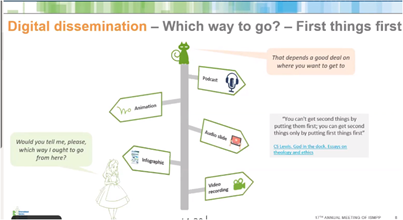
Knowing the target audience is key:
- How do they like to consume information?
- Where and how do they consume information?
- How can data best be communicated?
Rekha Rao (Amgen) advises to keep the audience at the centre of planning efforts, then consider the data and the communications healthcare ecosystem (which can be more complex), and finally consider digital asset types. She also recommends making sure that data are provided in preferred formats for different audiences.
Additionally, she mentioned an Amgen publications decision tool that generates recommendations on journals and digital enhancements based on variables keyed in. It will be interesting to hear more about this tool in future Publications Professionals forums.
Hetal Patel (Boehringer Ingelheim) provided insights on her experience having spearheaded the integration of publications and congress plans, as well as considerations and best practices for both planning and execution of digital enhancements (see slide below).
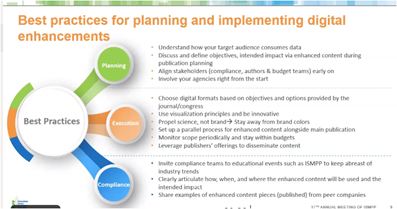
In addition to planning and creating the optimal digital enhancement, there is a need to also measure the impact of the digital enhancement or digital strategy. Metrics in this arena are evolving at a rapid pace—moving from the standard quantitative metrics to qualitative metrics; however, the qualitative metrics are yet to be defined.
| Quantitative | Qualitative |
| Number of views Number of downloads Frequency of content sharing | Decision-making pathways Increased knowledge Budgetary? Internal measure of repurposing an asset (justifying budget) |
Challenges in execution
With the increase in digital assets for publications being repurposed for non-publication purposes, legalities and copyright issues for new stakeholders need to be considered and medicolegal reviews need to be planned. Copyright issues need to be discussed with the journal but possibly also with the author, as was the case with published figures/tables in the past.
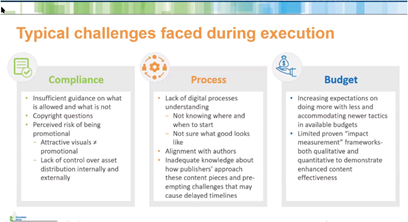
Conclusions
Great strides have been made towards the adoption of digital media in recent years, and more so during the COVID-19 pandemic and in the current increasingly virtual world. Digital is definitely here to stay! However, further consideration is needed to optimize this new trend and to ensure that digital tools are effectively being used to communicate healthcare and scientific advances for better patient outcomes.
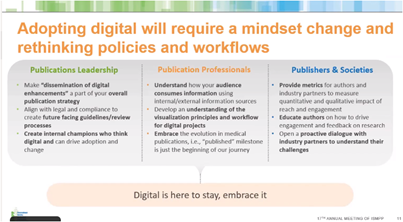
This article is a part of report on 17th Virtual Annual Meeting of ISMPP. Click here to get your copy of the comprehensive report today.
Share this post
About the author

Beverly Haley
Beverly Haley is Director, Publications, at Cactus Life Sciences.













